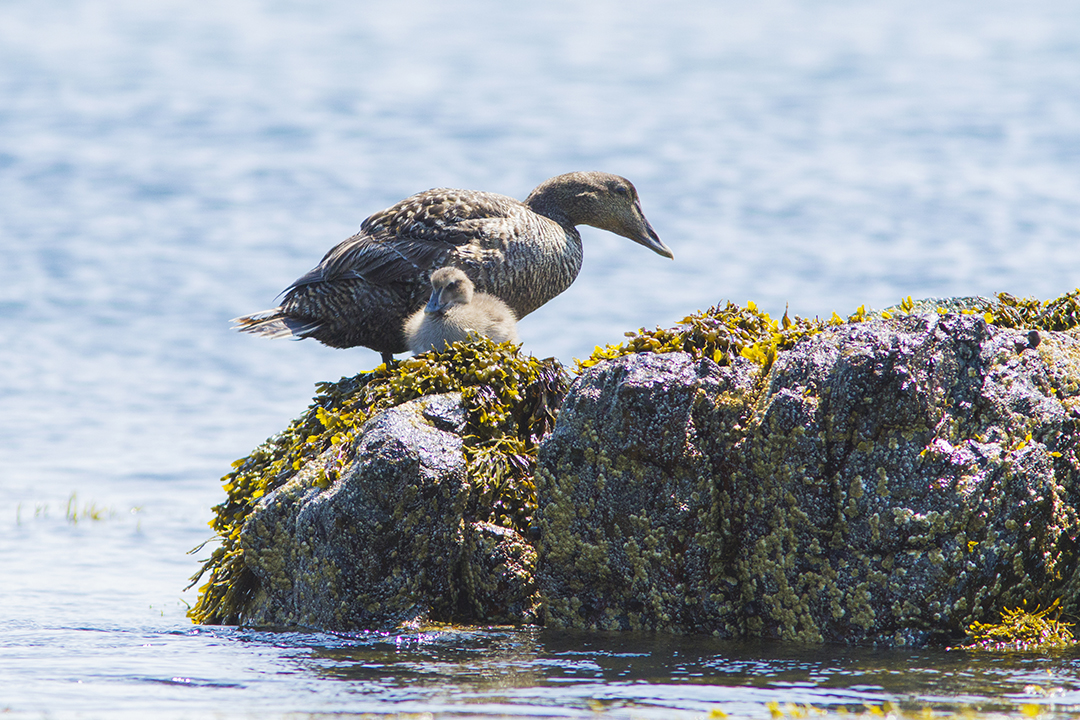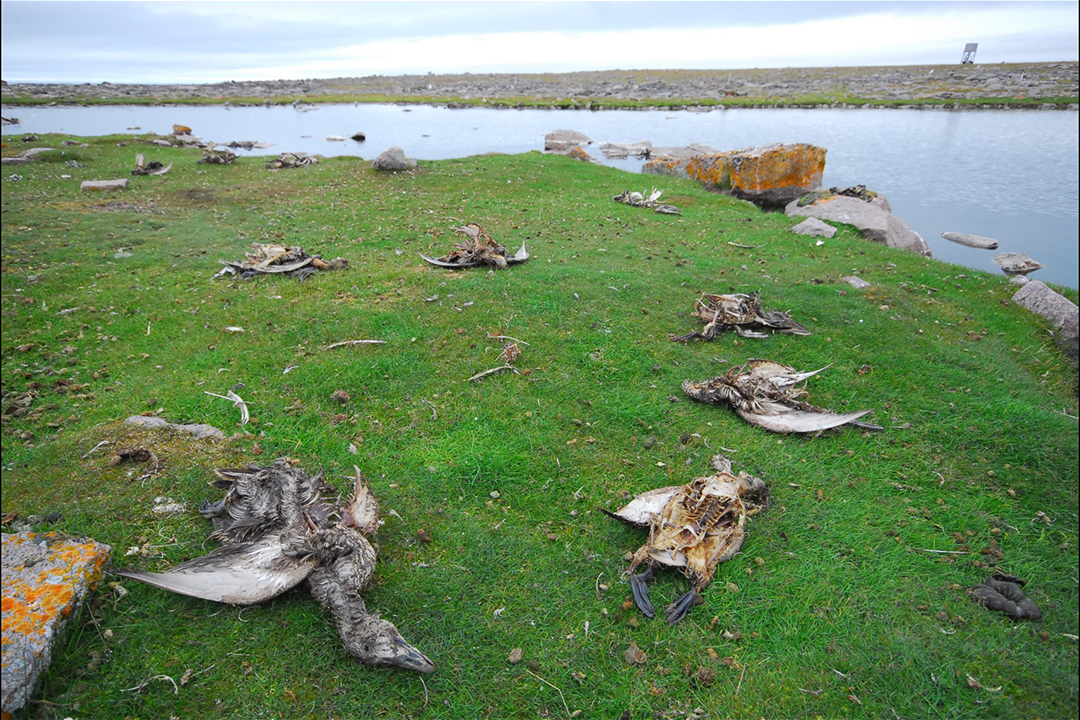
Study credits herd immunity for stopping avian cholera among sea ducks
New research published in Scientific Reports shows that herd immunity was instrumental in stopping avian cholera from infecting and destroying a population of Arctic-nesting sea ducks in Canada’s North.
Avian cholera, which is caused by the bacterium Pasteurella multocida, is a common and important infectious disease of wild birds in North America.
In this study, researchers from Carleton University (CU) and scientists at Environment and Climate Change Canada (ECCC) followed the effects of avian cholera over an eight-year period on a population of northern common eider ducks returning to breed in Nunavut. This large sea duck species breeds in the Arctic and nests on northern islands or coasts with rocky shorelines.
A senior author of the study is ECCC research scientist Dr. Catherine Soos, an adjunct professor in the Western College of Veterinary Medicine’s Department of Veterinary Pathology at the University of Saskatchewan (USask).
The research team had already established a long-term study on duck population ecology on Mitivik Island in Nunavut, so they were in the rare position to study the emergence and dynamics of the disease epidemic in the wild over multiple years.
Between 2005 and 2012, avian cholera was responsible for annual mortality of varying degrees in the sea ducks. Death rates initially climbed as high as 36 per cent among breeding females, and collectively, deaths from avian cholera caused a 50 per cent decline in the eider breeding population. In a single breeding season alone, up to 3,000 nesting hens of an estimated population of 8,000 birds died due to avian cholera.
But over time, the duck population’s annual mortality rate from avian cholera gradually declined to the point that researchers have detected little to no avian cholera-related deaths in recent years.

The team believes the disease’s disappearance is the result of herd immunity, which occurs when enough members of a population develop immunity to a disease. The birds that survived the epidemic developed antibodies to avian cholera, which protected them from the disease.
The study was based on field and laboratory samples collected over eight summers from hundreds of ducks returning to the breeding colony each spring. The researchers tested whether annual estimates of the proportion of ducks carrying antibodies to P. multocida were related to annual transmission rates of the bacterium in the population.
Dr. Jacintha Van Dijk, a former postdoctoral fellow at CU, led the study’s analysis, building on previous research by former PhD students Drs. Sam Iverson of CU and Naomi Jane Harms of USask.
Harms, whose work was supervised by Soos, is now program veterinarian for the Yukon Department of Environment. Iverson works as a biologist with the Canadian Wildlife Service at ECCC.
Soos and her colleagues at other institutions — including Northern Arizona University and IDVet in France — oversaw the necessary tests to detect the presence of infection and exposure.
An intriguing point about their findings was that the disease’s fadeout to a smoldering infection correlated with the population’s average antibody levels, and not with the population’s prevalence of infection.
While epidemic fadeout was predicted to relate to lowered densities of birds following from disease-induced mortality, the team found that transmission rates didn’t correlate with colony size. Disease transmission may still have been possible because of the thousands of birds on the small island — about 24 hectares in size — even following population decline.
Researchers don’t know how long the birds’ antibodies to avian cholera will last. Antibody levels may wane over time, and avian cholera outbreaks may begin causing mortality again once the level of susceptible ducks in the population rises.
This research underscores the need for monitoring disease dynamics and fadeout in wildlife species over longer periods and in relation to host condition and immune status. These studies are required to predict the impacts of disease and to identify when potential management interventions are needed in wildlife populations.
Reference: van Dijk JGB, Iverson SA, Gilchrist HG, Harms NJ, Hennin HL, Love OP, Buttler I, Lesceu S, Foster JT, Forbes MR, Soos C. “Herd immunity drives the epidemic fadeout of avian cholera in Arctic-nesting seabirds.” 2021. Scientific Reports. 11:1046.
